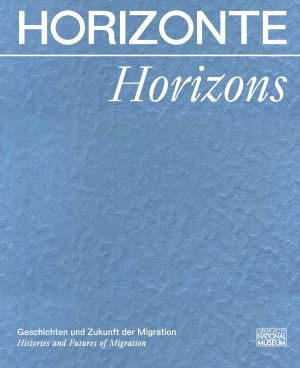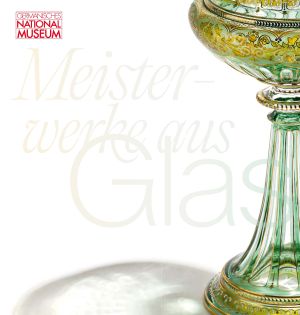Zech, Heike
Horizonte - Horizons: Geschichten und Zukunft der Migration / Histories and Future of Migration
Venturing into the unknown is one of the fundamental experiences of humanity, a throughline from the Stone Age to the space age, and part of every family history. Where to go? What to take with you? This volume introduces people who have become migrants for a large variety of reasons, including author Judith Kerr and artist Gerhard Richter. Their stories highlight that art and culture also depend on migration. Following the phases of migration, from departure to arrival and arriving, the volume’s authors describe experiences of migration. The final chapter is a glimpse into the future, i.e. mankind’s step into space between science and fiction.
Zeichen der Zukunft: Wahrsagen in Ostasien und Europa / Signs of the Future. Divination in East Asia and Europe
What will the future bring? The exhibition "Signs of the Future. Divination in East Asia and Europe" is the first to showcase instruments, methods and practitioners of fortune-telling in a cross-cultural dialogue. In this bilingual catalogue, leading international experts explore 130 objects from the Germanisches Nationalmuseum, the National Museum of Taiwan History and the Academia Sinica, including a Feng Shui compass, scientific instruments and even tarot cards.
Due to the COVID-19-Pandemic, the exhibition opening at the Germanisches Nationalmuseum, scheduled for December 2020, takes place in 2021.
Meisterwerke aus Glas
Today, glass has become commonplace. The former luxury item has become a disposable product.
How does a glass become a masterpiece? Transparency or luminous color? The pure effect of the material or a precious ornamentation of the surface? The collection of the Germanisches Nationalmuseum contains a large stock of drinking and table glasses as well as numerous other objects made of this mostly transparent material. This book presents about 50 of them. It provides insights into the development of hollow glass, beginning with antiquity and extending to the 1950s, and also shows the diversity of the material by means of objects that were used in a wide variety of areas.
Hello Nature: Wie wollen wir zusammenleben?
The book accompanying the exhibition ‘Hello Nature. How best to live with you?’ explores mankind's enduring engagement with nature, shaped by the conflicting dynamics of subjugation, dangers and conservation. In what ways have humans shaped nature? What limits does nature set for humans? And: How can we create a new form of coexistence? Tracing an arc from prehistory and early history to the present reveals the extent to which culture has informed our perception of and interaction. In order to master the current ecological crises, a cultural change is also necessary. We need new visions, images and narratives in order to develop a sustainable coexistence between humans and nature.










